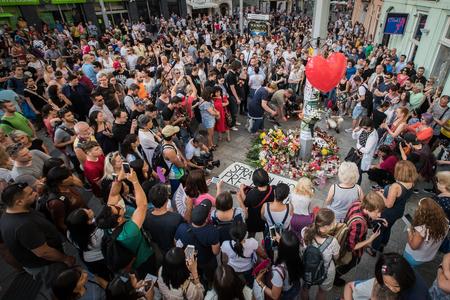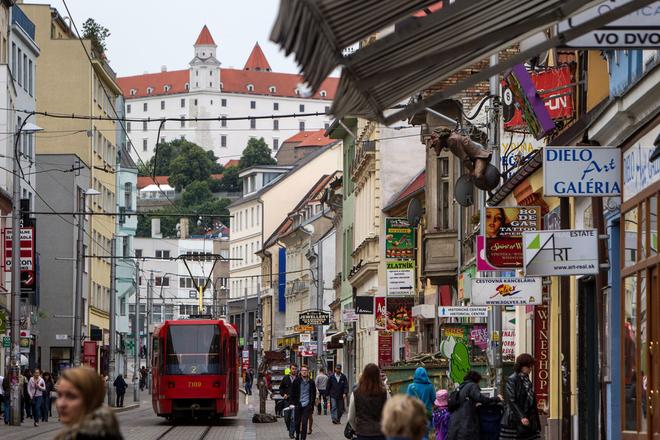There was a saying in Bratislava before the World War I that every true Prešporák spoke Slovak, German and Hungarian. Multicultural character of this city had been gone for several decades but current development suggests that this genius loci is making its comeback.
Bratislava was a vibrant and multicultural city from its early origins. The Bratislava Castle was a significant seat of the Celts who were in close contact with the Romans. Modern Bratislava was founded by Germans in the middle of the 13th century. The capital city was at the intersection of regional migratory routes from Eastern and Western Europe and that was the reason why for almost its entire history was Bratislava a place where many cultures and nationalities lived and prospered together.
It was also at that time when Jews were coming to the city. Roma, Hungarian, Croatian and Serbian communities have also gradually settled in Bratislava.
The multicultural past…
Every part of the city had its own community. Podunajské Biskupice was home to mostly Hungarian citizens, Prievoz was inhabited by Germans, Karlova Ves had a mixture of Slovak and German residents and Devínska Nová Ves was home of Croats.
A census from 1850 shows that 75 percent of Bratislava's residents were German, 17 percent Slovak, 7 percent Hungarians and 1 percent other nationalities. However, in 1910, the Hungarian population made up to 40 percent and around 40 percent of Germans. The rest were minorities of Slovaks and other nationalities.
Everything changed after first world war when Bratislava became part of newly formed state of Slovaks and Czechs, Czechoslovakia, after which came the saddest period of the city, when during second world war was Bratislava completely stripped of its multicultural character. Thousands of Jews were sent to death camps, almost all Germans fled the city after the end of the war and many Hungarians chose to flee Bratislava or changed their names and became Slovaks so they would fit in. After this came a period of time when Slovaks were a majority in Bratislava and this period lasted until the fall of socialism in 1989.
… and present
Today there are more than 200 nationalities living in Bratislava. This newly formed vibrant society created the bedrock for unprecedented prosperity and cultural enrichment for locals that made Bratislava most attractive for Slovaks to live in. As a result, Bratislava became the fastest growing city in Slovakia.
However, the recent rise of extremism in Slovakia led to growing tensions with fatal consequences. Young Filipino Henry Acorda was murdered by a radical Slovak when defending two women on Obchodná street. This terrible act led to public gatherings where Bratislavans paid tribute to Henry. Local activists created campaigns addressing local authorities to prevent violence against minorities and preserve the multinational character of Bratislava.

New diverse communities have been developing in Bratislava for decades. They proved to be not only enriching in terms of economy but also in culture and cuisine. They became an integral part of Bratislava and they define its contemporary character. Bratislava would not be the same without them.
A positive example
In the streets of this city, you will encounter the Hungarian, Jewish, German, Bulgarian, Serbian, Ukrainian, Syrian, Mexican, Italian and Vietnamese communities. They have their associations, periodicals, cultural institutions and TV stations.
They also make the community stronger democratically as they too can vote in the local election where they can decide who will be the next deputy or mayor. All of that is beneficial for Bratislava and its residents as it creates a more connected society capable of a higher quality of life where various communities develop and thrive.
The multicultural character of Bratislava could be a positive example for the rest of the country, where most of the Slovaks who lack the experience to coexist with foreigners have the opportunity to live in the same neighbourhood with people of other nationalities. Perhaps, this will make us understand that despite our difference in looks, we are all human beings caring about our families and communities.
This text is part of the Migration Compass project of the Human Rights League in cooperation with the Interior Ministry. For more information about the project visit www.hrl.sk.
Author: Tomáš Kriššák

 Obchodná Street in Bratislava (source: SME)
Obchodná Street in Bratislava (source: SME)